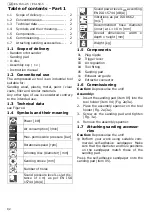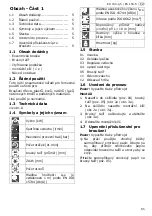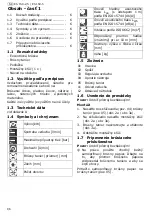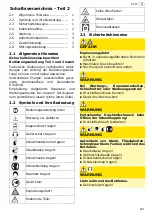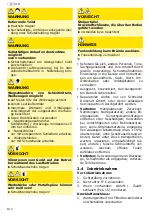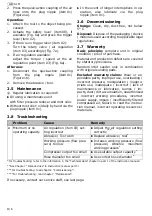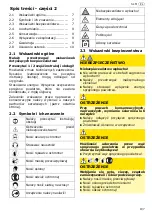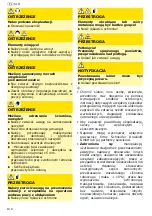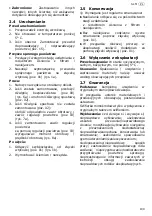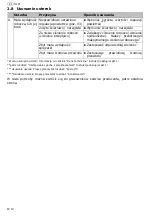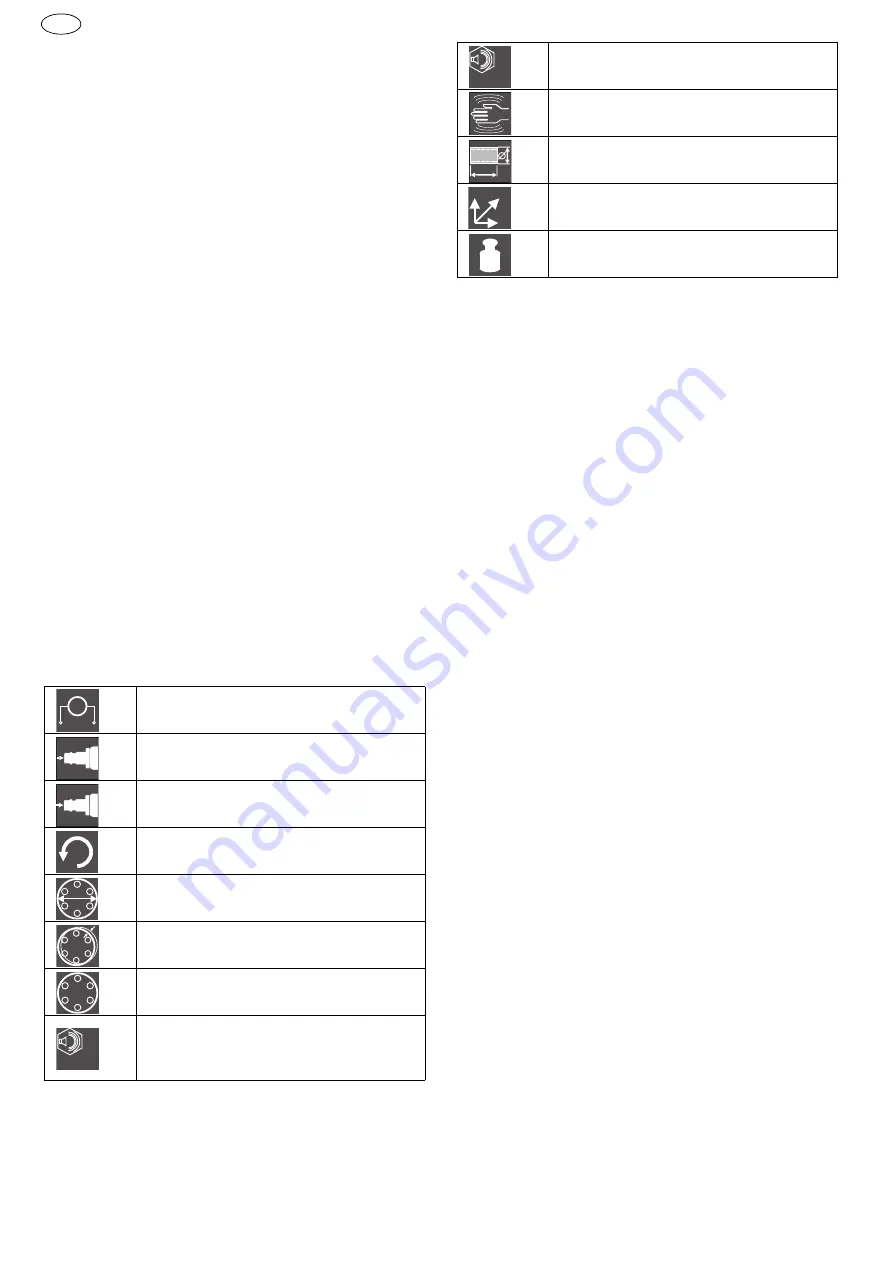
I/2
ES 150-2,5 / ES 150-5
GB
Table of contents - Part 1
1.1 Scope of delivery
– Random orbit sander
– Sanding pad
– U-disc
– Assembly key ( 1 x )
– Instruction manual
1.2 Conventional use
The compressed air tool is an industrial tool
suitable for:
Sanding wood, plastic, metal, paint / clear
coats, filler and similar materials.
Any other type of use is considered contrary
to the intended use.
1.3 Technical data
see Figure A
1.4 Symbols and their meaning
1.5 Components
1.6 Commissioning
Caution:
Depressurise the unit!
Assembly:
1. Insert the sanding pad (item 05) into the
tool holder (item 04) (Fig. 2a/3a).
2. Place the assembly spanner on the tool
holder (Fig. 2a/3a).
3. Screw on the sanding pad and tighten
(Fig. 3a).
4. Remove the assembly spanner.
1.7 Attaching sanding accesso-
ries
Caution:
Depressurise the unit!
L
Perform your work using suitable com-
mercial self-adhesive sandpaper. Make
sure that the diameter and hole positions
on the sandpaper match those of the
sanding pad.
Press the self-adhesive sandpaper onto the
sanding pad (item 05).
1.1
Scope of delivery ......................
2
1.2
Conventional use ......................
2
1.3
Technical data ..........................
2
1.4
Symbols and their meaning ........
2
1.5
Components.............................
2
1.6
Commissioning .........................
2
1.7
Attaching sanding accessories.....
2
Power [kW]
Air consumption [l/min]
Max. permissible pressure [bar]
Rotational speed [rpm]
Grinding disc (diameter) [mm]
Sanding stroke [mm]
Number of holes
Sound pressure level L
pA
(at dis-
tance of 1 m) as per EN ISO
15744 [db(A)]
P
Q
p
max
n
Z
L
pA
Sound power level L
WA
according
EN ISO 15744 [dB(A)]
Vibrations as per ISO 8662
[m/s
2
]
Recommended hose diameter
(inner) at L= 10 m [mm]
Overall dimensions: width x
depth x height [mm]
Weight [kg]
01 Plug nipple
02 Trigger lever
03 Air regulation
04 Tool fitting
05 Sanding pad
11 Exhaust air guide
12 Extractor connector
L
WA
10 m
H
T
B
m




